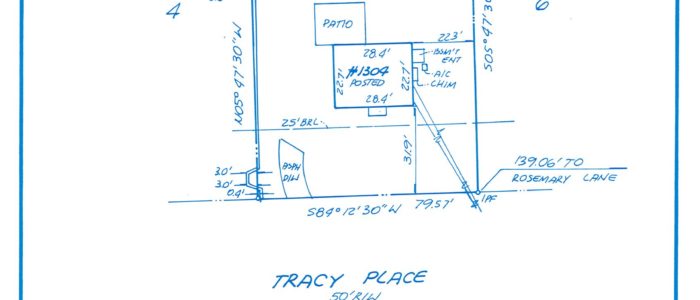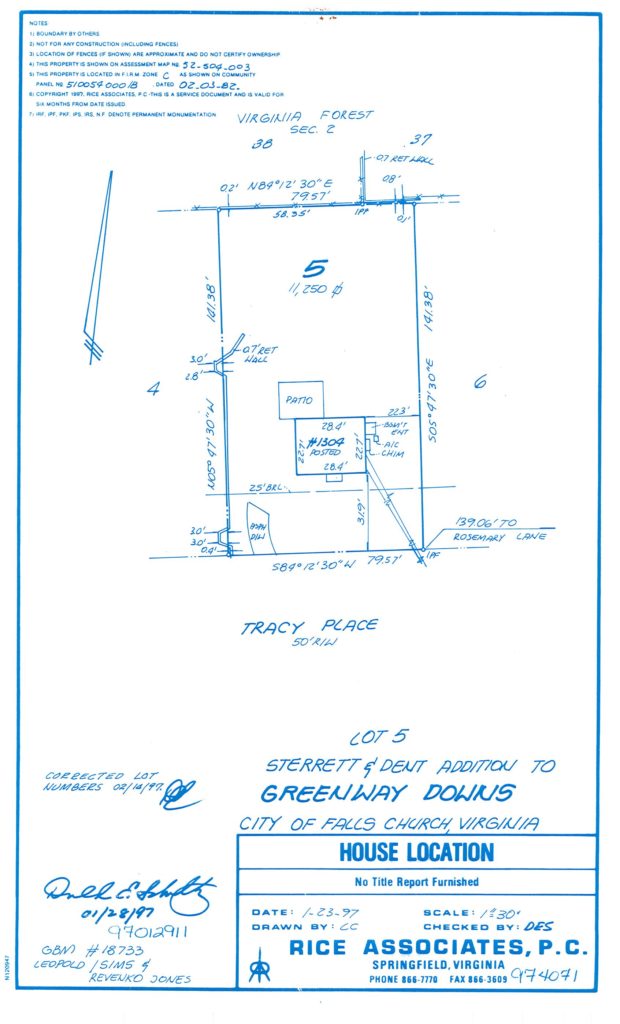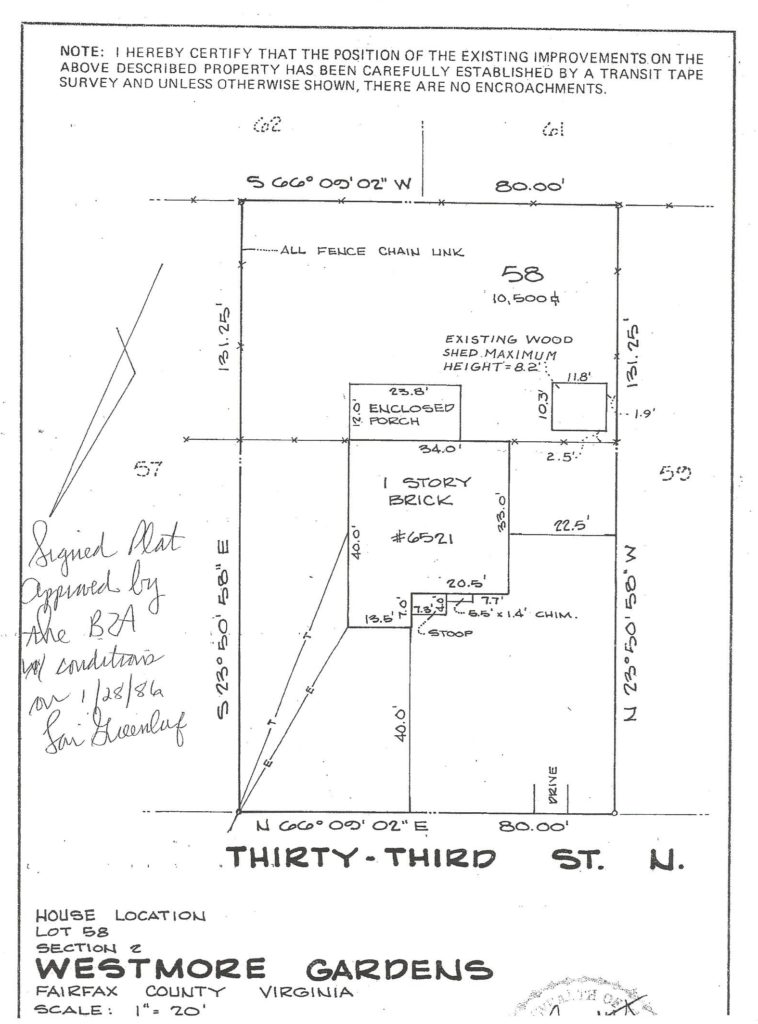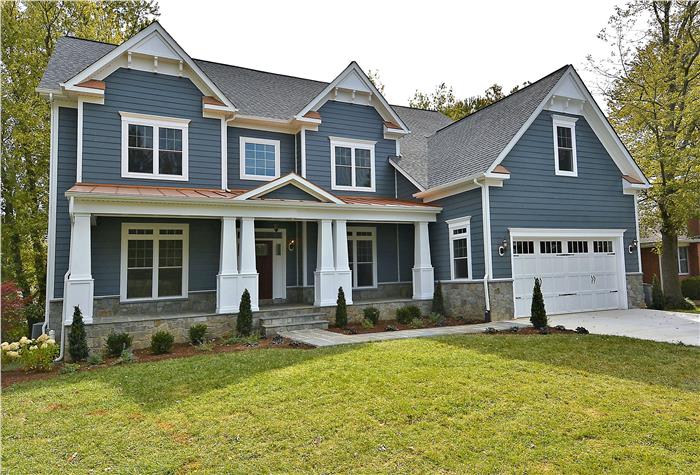Will This Plan Fit On My Lot?

We get asked this question a lot. Whether the client owns the land (or is looking to buy the land), people want to know, will the house I want to build fit on my lot?
Here are three important questions to consider:
What are the dimensions of my lot?
Whether you already own the land or you are looking to purchase land, you should posses or try to obtain a plat for the property. The plat will show the dimensions of the property as well as any structures (house, retaining wall, shed, etc.) that were present at the time the survey was done.
Having the dimensions of the lot is the first step in determining the building envelop (how far the house must sit from all four sides of the property).
What is the property zoned?
The next step in determining if a home will fit on your lot is to find out how the land is zoned. The county has restrictions on how property can be used. For example, in Fairfax County, R-4 Zoning is for residential use only so only homes can be built (owners can get special use permits for certain things like running a home day care or home office). The zoning designation not only determines the approved use of the property but it will also dictate the setback requirements.
Using the above plat as an example, this property is zoned R-4 which means the house must sit 30′ from the front property line, 10′ from each of the side property lines and 25′ from the rear property line.
Therefore, the building envelop for this property is 60′ x 76.25′. That gives you space to build a home that is up to 60′ wide and 76′ deep. Models like the Langley, the McLean Hamlet, the Winslow and the Chesterbrook would fit quite nice!
In fact, that is what we ended up building on this lot.
So pretty!
Are there easements or restrictions (like RPA or Flood Plain)?
I always check for easements (recorded and unrecorded) before buying a lot. Easements can greatly restrict what you can build. Public sewer easements are the most common you will see. There are requirements (per county) for how far the house needs to sit from an easement.
Lots that sit in an RPA (Resource Protection Area) or Flood Plain can also have strict requirements on what can or cannot be built. It’s not to say you can’t build on lots with these designations but it’s important to understand how it might restrict redevelopment.
My best piece of advice when purchasing a lot is to incorporate a study period in the contract. Within 5-7 days, you can conduct a feasibility study that will help you understand what you can and can’t build.
Check out these blog posts for more information on find the perfect lot and what to do during a study period.
Need help in determining what you can build on your lot? Give us a call!
Dream Big. Build Smart.


